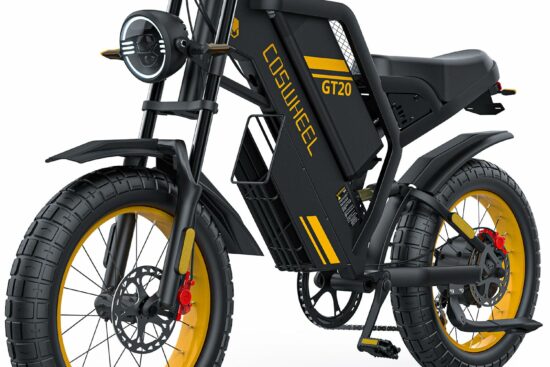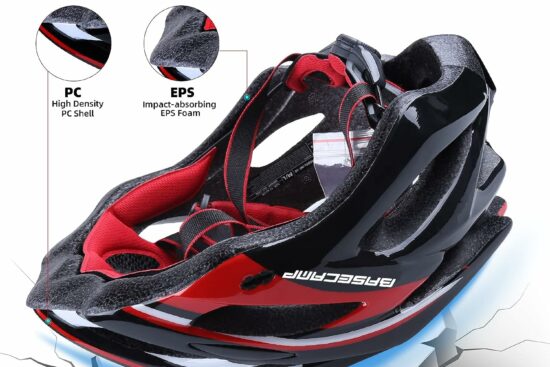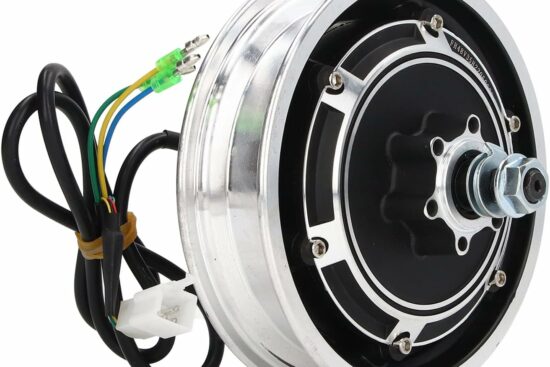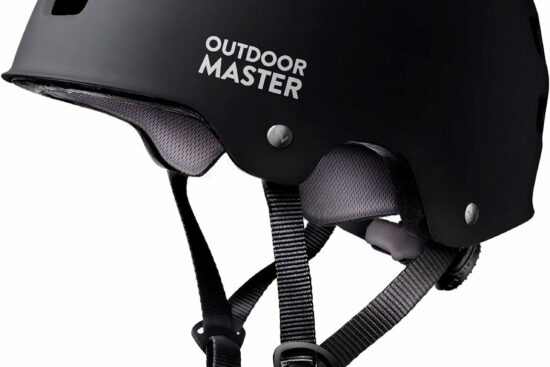
If you’ve recently had an injury and are looking for ways to speed up your recovery process, you might be wondering if an e-bike could be a useful tool. Well, the answer is, it depends. In this article, we’ll dive deeper into the topic and explore how an e-bike can potentially aid in your recovery from an injury.
It’s important to note that every injury is different, and the recovery process varies from person to person. However, e-bikes can offer several benefits that may support your recovery. From providing low-impact exercise to assisting with mobility and increasing your overall fitness level, an e-bike can be a valuable tool to incorporate into your recovery routine. To learn more about how an e-bike can assist you in your injury recovery journey, keep reading our informative article.
Introduction
Understanding the use of e-bikes for injury recovery
If you are recovering from an injury, you may be wondering if an e-bike can be a helpful tool in your recovery process. E-bikes, also known as electric bikes, have gained popularity in recent years due to their ability to provide a boost in pedaling power, making cycling easier, especially for those who may have limitations due to injury. In this article, we will explore the benefits of using e-bikes for injury recovery, the types of injuries that are suitable for e-bike recovery, factors to consider before using an e-bike for recovery, precautions and safety measures, tips for effective e-bike recovery, success stories of e-bike recovery, and a comparison with other forms of injury recovery.
Benefits of using e-bikes for injury recovery
Low impact on injured areas
One of the major benefits of using an e-bike for injury recovery is its low impact on injured areas. Unlike traditional biking, where you have to rely solely on your own power to pedal, an e-bike provides assistance through a motor that can help reduce the strain on your injured muscles or joints. This low impact nature of e-biking allows individuals to gradually rebuild strength and mobility without putting excessive stress on their bodies.
Gradual intensity adjustment
Another advantage of e-bikes for injury recovery is the ability to adjust the intensity of your ride. E-bikes often come with different levels of assistance, allowing you to choose the level that suits your current fitness level and injury status. This gradual intensity adjustment ensures that you can start with a lighter workout and gradually increase the intensity as your body adapts and heals.
Enhanced blood circulation
Cycling, whether it’s traditional or on an e-bike, has been known to promote blood circulation throughout the body. The consistent movement of the legs while pedaling helps stimulate blood flow, delivering essential oxygen and nutrients to injured areas, which aids in the healing process. Improved blood circulation can also help reduce inflammation and swelling, which are common responses to injuries.
Muscle strengthening and rehabilitation
Using an e-bike for injury recovery can also help with muscle strengthening and rehabilitation. As you pedal, your muscles are engaged and worked, promoting muscle growth and endurance. This can be especially beneficial for individuals who have experienced muscle atrophy due to immobilization. E-bike riding helps to rebuild muscle strength and coordination, facilitating a more comprehensive recovery process.
Psychological well-being
Recovering from an injury can be a mentally challenging time. The loss of mobility or independence can lead to feelings of frustration, depression, and anxiety. However, using an e-bike for recovery can have positive effects on psychological well-being. The ability to go outdoors, enjoy the fresh air, and engage in physical activity can boost mood, improve self-esteem, and provide a sense of accomplishment. E-bike riding can also serve as a great distraction from pain or negative thoughts, allowing you to focus on the joy of riding and the beauty of your surroundings.
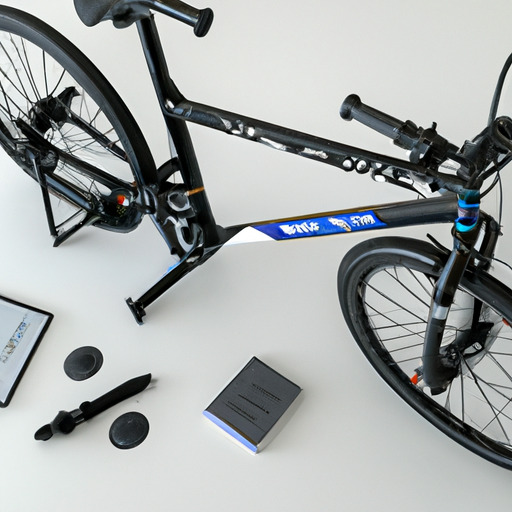
Types of injuries suitable for e-bike recovery
Orthopedic injuries
E-bike recovery can be particularly beneficial for individuals with orthopedic injuries. These injuries include fractures, sprains, or strains in the bones, muscles, joints, ligaments, or tendons. The low impact nature of e-biking helps to prevent further damage to these areas while promoting healing and rehabilitation. It allows individuals to gradually regain strength and range of motion without putting excessive stress on their injured orthopedic structures.
Joint injuries
Joint injuries, such as those involving the knees, hips, or ankles, can greatly benefit from e-bike recovery. The assistance provided by an e-bike can help alleviate pressure on the joints, reducing pain and discomfort during the recovery process. By using an e-bike, individuals with joint injuries can engage in low-impact exercise that promotes joint mobility, stability, and overall function.
Muscle strains and sprains
Muscle strains and sprains are common injuries that can benefit from e-bike recovery. These injuries often occur due to overuse, sudden movements, or accidents. E-biking allows individuals to continue exercising and promoting blood flow to the injured area without exacerbating the strain or sprain. The assistance provided by the e-bike motor can help reduce the strain on the injured muscles, allowing them to heal while still engaging in physical activity.
Post-surgery recovery
E-bikes can also be used as a tool for post-surgery recovery. After certain surgeries, such as joint replacements or reconstructions, it is important to gradually reintroduce physical activity. E-bike riding can provide a gentle and controlled form of exercise that aids in the recovery process. It allows individuals to regain strength, mobility, and endurance, helping them return to their normal activities of daily living more efficiently.
Factors to consider before using an e-bike for recovery
Consulting with a healthcare professional
Before embarking on e-bike recovery, it is essential to consult with a healthcare professional. They will assess your injury, provide guidance on whether e-biking is suitable for your specific condition, and advise you on any precautions or limitations you may need to take. Healthcare professionals can offer personalized recommendations tailored to your individual circumstances, ensuring a safe and effective recovery process.
Choosing the right e-bike model
When considering an e-bike for recovery, it is important to choose the right model that suits your needs. Factors to consider include the type of terrain you will be riding on, the weight and size of the bike, and the battery life. You may also want to consider features such as adjustable seat height, handlebar position, and suspension systems, which can enhance comfort and accommodate any specific requirements you may have due to your injury.
Adjusting the settings and assistance level
Once you have chosen an e-bike, it is crucial to adjust the settings and assistance level to accommodate your recovery needs. Most e-bikes offer a range of assistance levels, allowing you to choose the level that provides the right amount of support for your current fitness and injury status. Starting with a lower assistance level and gradually increasing it over time can help ensure a gradual and controlled recovery process.
Monitoring pain and discomfort
As with any form of exercise, it is important to monitor your pain and discomfort levels while using an e-bike for recovery. While some discomfort may be expected during the recovery process, it is important to differentiate between normal muscle soreness and pain that could indicate an exacerbation of your injury. If you experience severe or prolonged pain, it is advisable to consult with your healthcare professional to assess the situation and make any necessary adjustments to your recovery plan.
Gradual increase in biking duration
To ensure a safe and effective recovery, it is recommended to start with short and easy rides on your e-bike and gradually increase the duration over time. This gradual increase allows your body to adapt to the physical demands of cycling and helps prevent overexertion or re-injury. Remember to listen to your body and take breaks as needed, ensuring that you are not pushing yourself beyond your current capabilities.

Precautions and safety measures
Wearing necessary protective gear
When using an e-bike for recovery, it is important to wear necessary protective gear to ensure your safety. This includes a properly fitting helmet to protect your head in case of any accidents or falls. Additionally, wearing appropriate cycling gloves, knee pads, and elbow pads can provide extra protection and prevent injuries in case of a sudden impact or loss of control.
Maintaining proper posture and technique
Maintaining proper posture and technique while riding an e-bike is crucial to prevent unnecessary strain on your body and reduce the risk of injury. Ensure that you have a good grip on the handlebars, keep your back straight, and distribute your weight evenly on the saddle. Pedal with a smooth and controlled motion, avoiding sudden jerks or excessive force. If you are unsure about your posture or technique, consider taking a lesson or consulting with a cycling instructor.
Avoiding rough terrains and extreme weather
To minimize the risk of falls or accidents, it is advisable to avoid rough terrains, especially during the early stages of your recovery. Stick to smooth, paved roads or designated bike paths that provide a stable and controlled riding surface. Additionally, extreme weather conditions, such as heavy rain, snow, or strong winds, can pose additional risks while riding an e-bike. It is best to avoid these conditions and wait for more favorable weather before heading out on your recovery rides.
Following traffic rules and regulations
While using an e-bike for recovery, it is important to follow all traffic rules and regulations to ensure your safety and the safety of others. Ride in designated bike lanes or on the right-hand side of the road, obey traffic signals and signs, and always yield to pedestrians. Be aware of your surroundings, use hand signals to indicate your intentions, and maintain a safe distance from vehicles. By following traffic rules, you can minimize the risk of accidents and focus on your recovery journey.
Tips for effective e-bike recovery
Starting with short and easy rides
When beginning your e-bike recovery journey, it is recommended to start with short and easy rides. This allows your body to gradually adapt to the physical demands of cycling and prevents overexertion. Start with 10-15 minute rides at a comfortable pace, and gradually increase the duration and intensity as your body becomes stronger and more accustomed to the exercise.
Engaging in interval training
Interval training can be an effective way to maximize the benefits of e-bike recovery. This involves alternating between periods of higher intensity riding and periods of lower intensity or rest. For example, you could start with a warm-up period of 5 minutes at a gentle pace, followed by 2 minutes of faster pedaling, and then 1 minute of recovery at an easier pace. Repeat this cycle for a set duration or number of repetitions, gradually increasing the intensity and duration of the higher intensity intervals over time.
Incorporating upper body exercises
While e-biking primarily engages the lower body, it is important to also incorporate upper body exercises into your recovery routine. This helps promote overall strength and balance throughout your body. Consider adding exercises such as arm curls, shoulder presses, or push-ups to your routine. These exercises can be done before or after your e-bike ride or on alternate days to further enhance your recovery process.
Utilizing e-bike features and assistance
Take advantage of the features and assistance provided by your e-bike to enhance your recovery experience. Many e-bikes have additional features such as built-in fitness trackers, heart rate monitors, or smartphone apps that can help you track your progress and set goals. Some e-bikes also offer modes specific for recovery or rehabilitation, which adjust the assistance level and intensity to suit your needs. Utilize these features to customize your rides and ensure a tailored recovery experience.
Tracking progress and setting goals
Tracking your progress and setting goals can be motivating and help you stay focused on your recovery journey. Use a journal or a smartphone app to record your rides, noting the distance, duration, and any observations or improvements you notice. Set realistic and achievable goals for yourself, such as increasing your ride duration by 5 minutes every week or completing a specific route without assistance. Celebrate your milestones along the way, and remember that progress takes time and consistency.
Success stories of e-bike recovery
Personal accounts of injury recovery with e-bikes
Many individuals have shared their personal accounts of using e-bikes for injury recovery. These stories highlight the positive impact that e-biking has had on their healing process and overall well-being. From regaining strength and mobility after joint surgeries to overcoming orthopedic injuries, e-bike recovery has proven to be a valuable tool for many.
Testimonials from professionals and experts
Experts and healthcare professionals have also recognized the benefits of using e-bikes for injury recovery. Physical therapists, sports medicine specialists, and rehabilitation experts have observed firsthand how e-biking can aid in the recovery process and contribute to improved outcomes for their patients. Their testimonials provide further validation of the efficacy of e-bike recovery.
Comparison with other forms of injury recovery
E-bike recovery vs. traditional physiotherapy
Traditional physiotherapy, which often involves exercises and stretches guided by a healthcare professional, can be complemented by e-bike recovery. While physiotherapy focuses on targeted exercises and specific techniques, e-biking provides a more holistic form of exercise that engages multiple muscle groups and promotes overall cardiovascular fitness. E-biking can also offer a more enjoyable and varied experience compared to traditional physiotherapy sessions, making it an appealing option for injury recovery.
E-bike recovery vs. swimming
Swimming is another popular form of exercise for injury recovery due to its low impact nature. However, e-biking offers some advantages over swimming. E-biking allows for weight-bearing exercise, which can help promote bone density and strengthen muscles in a way that swimming alone may not. Additionally, e-biking provides an outdoor experience, allowing individuals to enjoy nature and explore their surroundings while recovering from their injury.
E-bike recovery vs. stationary biking
Stationary biking, whether done at a gym or at home, can be an effective form of exercise for injury recovery. However, e-bike recovery offers additional benefits compared to stationary biking. The assistance provided by the e-bike motor allows individuals to gradually increase the intensity and duration of their rides, whereas stationary biking may have limitations in terms of resistance levels. E-biking also provides the opportunity to ride outdoors and experience a change in scenery, making it a more engaging and enjoyable form of exercise.
Conclusion
E-bikes can serve as an effective tool for injury recovery
In conclusion, e-bikes can serve as an effective tool for injury recovery. The low impact nature of e-biking, combined with the ability to adjust the intensity and assistance level, makes it a suitable option for individuals with various types of injuries. E-bikes promote blood circulation, muscle strengthening, and rehabilitation, while also offering benefits to psychological well-being. However, it is important to consider individual circumstances and consult with a healthcare professional before starting e-bike recovery. By following necessary precautions and safety measures, listening to your body, and gradually progressing in your recovery journey, you can utilize an e-bike to assist you in recovering from an injury and regain your physical fitness and mobility.
Remember to always prioritize safety and consult with a healthcare professional to ensure that e-bike recovery is appropriate for your specific injury and condition. With proper guidance and care, an e-bike can be a beneficial and enjoyable addition to your injury recovery process.
















